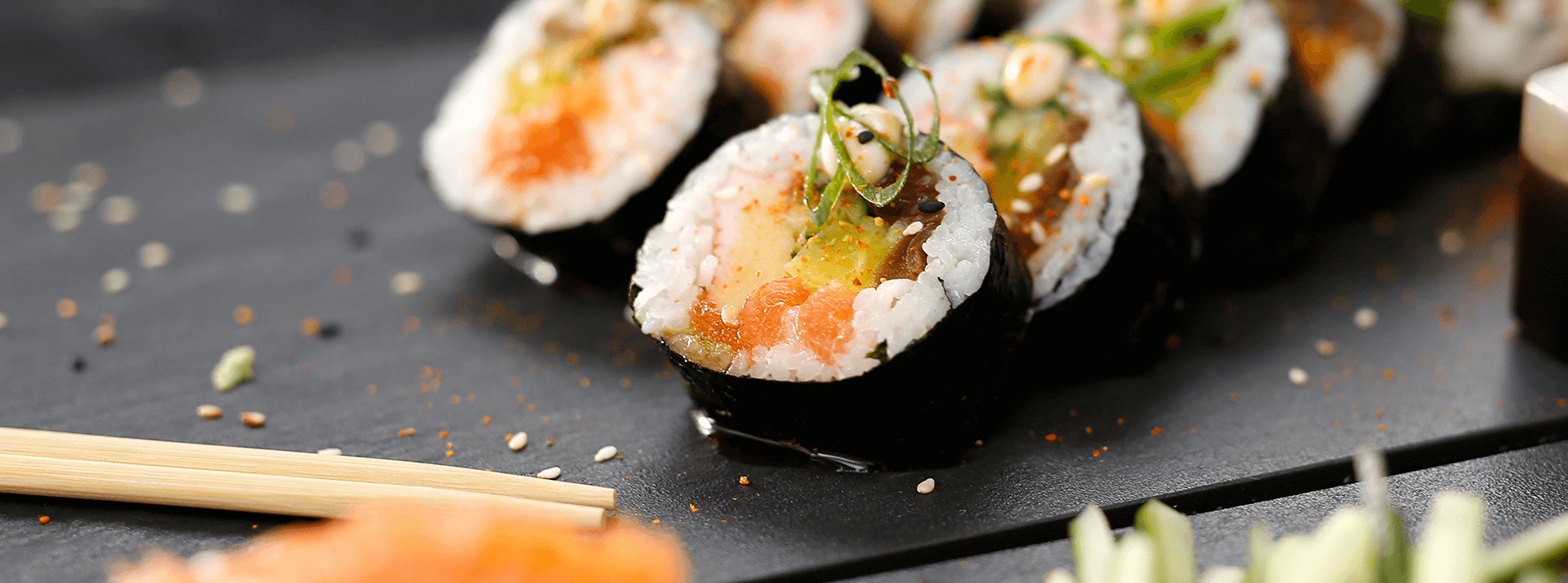Sushi can be wrapped with a variety of ingredients such as rice, tofu, vegetables and seaweed. Less common wrappings include soy and rice paper. In addition, the dishes Inarizushi and Gunkanmaki utilise Nori (seaweed) while others like Neta incorporates Tamagoyaki (omelette).
Nori is one of the most popular wrappings in sushi dishes and is a type of edible seaweed that derives from the red algae, Porphyra. It is often toasted beforehand and can also be used as a type of garnish.
Tamagoyaki is also used to wrap sushi. Japan’s version of the omelette is usually made with rice vinegar, soy sauce and sugar. It is created by rolling thin layers of egg together in a frying pan – it is eaten as both a breakfast and lunchtime food.
The rice itself is also used as a wrapping in certain cases. Western sushi like the California Roll is a good example and consists of avocado, crab meat and cucumbers wrapped ‘inside-out’, Uramaki-style, with the rice appearing on the outside of the roll.
There are of course many variations, particularly with regards to Western sushi. For instance, avocado is often used as a sushi- wrap. However this type of preparation is not usually practiced in Japan.



